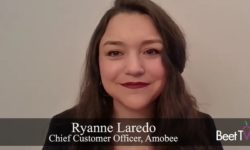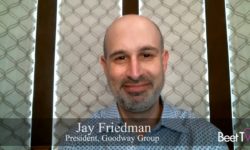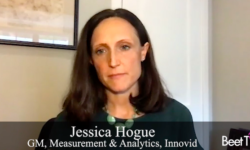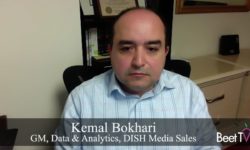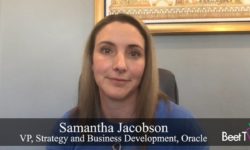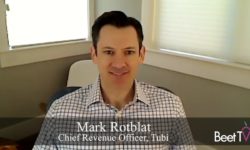“Reach people as they cook, study, travel, work out, stream what they love.” That is Spotify’s sale pitch to advertisers.
The music and podcast service clocked 185 million monthly active users supported by advertising in Q3 2020 – 31% up on the prior year – as it made €185 million from advertising, equating to a dollar in advertising revenue per user.
The secret sauce? Not just the user scale with which to deliver ads en masse, but also the user data to be able to target specific ads at the right listener.
Multi-platform listening
In this video interview with Beet.TV, Spotify’s global head of audience and data solutions Sean Kegelman describes how the music app listens to user’s signals.
“Identity graph is a really important concept for Spotify because we’re one of a very small handful of platforms that really engage with the consumer across an increasingly large variety of devices,” he says.
“(Consumption) increasingly is done through a variety of different connected devices, connected TVs, connected speakers, gaming consoles.
“(We have an) ability to understand the consumer across a really large variety of devices, and across different contexts, and as they use us in different times of day – you know, in the morning, in the evening, in the afternoon, etcetera.
“(We know) whether you’re using a gaming console in the morning, a mobile phone in the afternoon, or a connected TV in the evening … we know who you are. That experience of everything that we built up in terms of your taste profile stays with you.”
Self-serve ads
Spotify offers brands the ability to be part of users’ “soundtrack”. The company has long offered the dual revenue channels of premium subscriptions and ad support, now about evenly split in its revenue make-up.
It boasts that its Ad Studio platform helps advertisers create their first ad in just 10 minutes, with targeting and a free voiceover artist tool, video advertising and measurement.
“It really was incumbent upon us to have this kind of approach of, you can access Spotify wherever and however you want to, and we’re going to try to make that as accessible as possible,” Kegelman adds.
Listen and learn
Last month, Spotify reported content consumption had returned to pre-COVID levels after a pandemic listening lull, with in-car listening hours back up and home-based listening above pre-COVID levels, too.
Kegelman thinks measuring is important – not only for Spotify but for its advertiers.
“We’re continuing a march towards increasing quantification and increasing expectations of that quantification also being tied to performance,” he says.
“There’s going to be increasing need to just integrate those things across all the different objectives that an advertiser has – whether that’s the full funnel of objectives, from awareness to acquisition, to growth and retention, those are continuing to, need to be the walls across those things that are being brought down.”
You are watching “The New Media Reality: A Consumer-Centric View of Identity and Personalization Emerges,” a Beet.TV Leadership Series presented by Transunion. For more videos, please visit this page.







